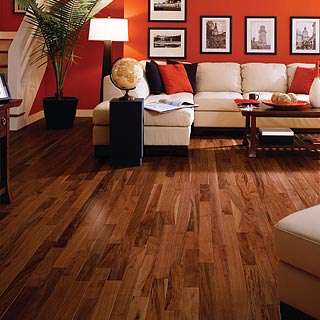 Making the decision to install hardwood floors means that you will soon have gorgeous flooring in your home.
Making the decision to install hardwood floors means that you will soon have gorgeous flooring in your home.
However, simply making this decision is not all that you have to do. Now that you know you want hardwood flooring in your home, you have to decide between glue-down floors or floating floors. Understanding the difference between both types of flooring will help you decide which one is right for you.
Glue-down floors are just that – they are the kind of floors that must be glued down in order to secure them. These types of floors cost a bit more than floating floors. They are thinner and require a moisture barrier to keep moisture at bay.
With this type of flooring, you lay the planks down and glue them to the underlying floor. If a plank ever needs replaced, you only have to remove the damaged plank and replace it with new.
Floating floors differ from glue-down floors because they are not attached to the underlying floor. You will not need any glue or nails with floating floors. Instead, the planks attach to each other and the floor “floats” above the underlying surface.
These types of floors are cost-efficient, so if you are on a budget, this might be the best choice. However, if one of the planks ever needs repaired, you will have to remove a large section of flooring to replace the damaged plank.
When deciding between floating floors and glue-down floors, it is important to keep your budget in mind, as well as your long-term usage. You want a quality floor that will last for many years. With glue-down floors, you can sand and re-finish the floors after a few years of use. With floating floors, you do not have that option, but they are more affordable than glue-down floors up front.
Ultimately, choose the type of flooring that best fits your needs and personal preferences.
